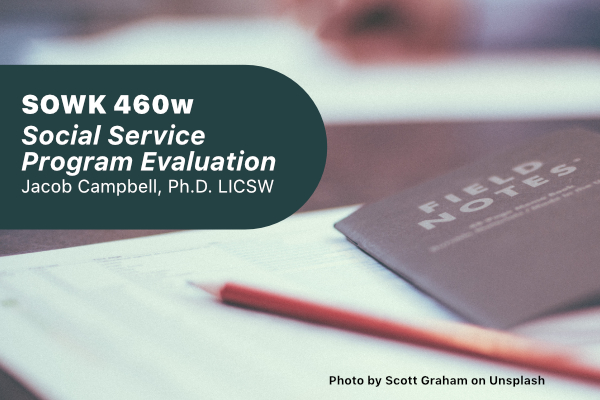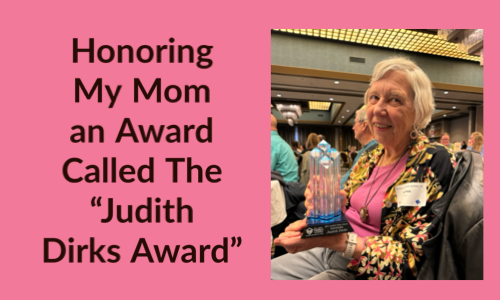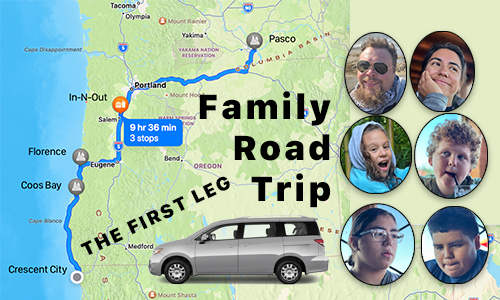Spring 2024 SOWK 460w Class 15 Weekly Email
Email sent on to SOWK 460

Here we go, you are almost finished. This week, work on your papers/presentations. Next week presentations. Then the week after, celebrate! You got this!
Unit Introduction and What You Will Learn
Week 15 is asynchronous, so there is no in-person class. Students are working on finalizing their executive summaries. To give students time to prepare their final papers (as well as the presentations that are due next week), there are no forums. Students also have their final journal entry to complete.
Unit Assignments
A-04a Individual Weekly Journal Entries
You can find the forum for the last journal entry at W-15 A-04a Journal Entry 10.
Assignment 04d: Executive Summary of the Program Evaluation
Meta: Points 200 pts (20% of student’s final grade); Deadline Sunday 04/28/24 at 11:55 PM; Submission via Anthology through the assignments section of MyHeritage. Locations Assignment Submission, Executive Summary Template.docx, and Syllabus Handout
Purpose: The executive summary gives students the opportunity to engage in scholarly writing that clearly articulates the outcomes of the program evaluation they completed.
Task: The Executive Summary of the Program Evaluation is used as a key assignment1 for SOWK 460w. The CSWE (2022) describes their ninth competency as students being able to evaluate practice with individuals, families, groups, organizations, and communities. Specifically, students will be assessed regarding the following the identified practice behavior of “select and use culturally responsive methods for evaluation of outcomes; and critically analyze outcomes and apply evaluation findings to improve practice effectiveness” (p. 13). Due to this assignment being a key assignment, although each group will submit the same version of the final paper and receive the same grade, each student must submit the paper via Anthology through MyHeritage assignments.
Each group must hand in one final paper that is 10-15 pages long and consists of seven sections: introduction, logic model, ethical framework, methods, data/findings, narrative/discussion, and references.
- The introduction provides a description of the agency, a clearly defined research question, and a review of the literature related to the agency type or population served that includes at least ten academic/peer-reviewed articles.
- The logic model contains a brief description and a figure representing the program’s resources, activities, output, outcomes, and impact.
- The ethical framework explains the considerations you made when designing the project. It should be described clearly and consistently. Potential questions answered include: How will you interact with clients, the institution, and subjects? How will you protect the rights and privacy of subjects? With whom will you share data, and why? Did your tasks/timeline ultimately go the way you thought it would? What took longer and why? What was more complicated than you expected, and why?
- The methods section explains how you collected your data. Consider the following questions: Why did you do it this way? Is it because of what was available? How did others collect data in the literature? If you did it differently than they did, why not?
- The data/findings include a narrative briefly explaining what you found in objective language. You do not need to interpret the results. Use tables and graphs to display data in a simplified way. The tables/graphs should be neat, clear, and self-explanatory.
- You will interpret your findings in the narrative/discussion section. What are your conclusions about the institution? What do you recommend? What needs to change? Does it relate to the literature in the introduction? If not, why not? Explain your findings in the context of the literature.
- The references section is an APA-formatted list of references cited in your paper.
- Many students will also have documents attached as an appendix. These might include forms used or other artifacts from your research that are discussed in the body of the executive summary.
Success: Students will submit a paper demonstrating their ability to use scholarly writing to describe their research project clearly. Grades are assigned based on the_ CSWE (2022) Competency Nine Practice Behaviors Rubric for the Executive Summary of the Program Evaluation_. I will provide feedback before final grades are due, which is by Wednesday 05/15/24 at 5:00 PM.
Unit Resources
You can find the flyer for presentations with your agencies. I know some of the staff from the Kennewick and Toppenish campuses are planning on attending. I also created a Google Doc for people to sign up to help bring some of the Light Refreshments for the Student Program Evaluation Symposium.
To-Do Lists
- Complete your final journal entry
- Finalize and one group member submit your final papers
- Work on your presentation due next week
- Potentially sign up to bring something for the presentation next week.
-
Heritage University’s social work program selects assignments across the curriculum for students to demonstrate each practice behavior defined by the CSWE to act as key assignments. These assignments are submitted to Heritage’s online portfolio, Anthology Portfolio, and given to all students at each site using the same grading rubric. Student scores help provide data for faculty to self-evaluate the program. ↩




